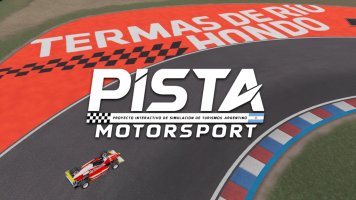Heres an update on some recent tests I have been doing....
Hardware suitable for:
- Cheap Entry To Experience Tactile Immersion
- Extract More Detail From Engine RPM & SPEED Mid-High Bass Frequencies
Have shared recently in this thread very affordable amps that can power the common tactile hardware.
I have been testing the
Dayton Audio HDN8 unit which seems a bit of a hybrid between the typical tactile unit and also a tactile exciter. Well I say this, as it offers decent mid-low-frequency output @40-Hz but will give felt tactile detail beyond 200Hz and over. So with that range, it is ideal for enhancing engine sensations. Or it could be combined with other tactile units to increase the immersion they already deliver.
Yes these "exciters" can generate lots of audio/sound via the material they are attached too, thus make it become like a speaker. However we can use "Crossover" control to restrict their output to below 250Hz and even 200Hz which is the general limits we find on other bass/subwoofer related hardware. This can remove any annoying audible levels but still let us directly apply tactile energy to specific places on a seat or pedals.
One benefit is that some units are very small but also very affordable and even come with 3M sticky back application so its certainly an area I want to explore more and share findings with. Especially when attaching directly to a seat for knee/shoulder and spine body regions additional enhancement.
What I want to do is compare it with some potential options in "exciters" that may offer a little less depth but with greater energy with the high frequencies. I really want to achieve more tactile energy (zing/buzz) from the high RPM sensations to match the audible sound they have.
Here Are Some examples that may help achieve this:
Notice how the already tested HDN8 compares to potential alternatives.
I am going to look at buying two more alternatives for additional comparisons but regardless of what tactile units you already have, this approach may help increase the energy for effects using above 80Hz that we find on many traditional tactile units starts to drop off.
 Achieving The Best Engine Immersion
Achieving The Best Engine Immersion
Recent Test
Assetto Corsa Competizione - Nissan GTR
I set up a configuration to have SSB (Shakeit bass shaker) work with Gear / Speed and RPM effects. I then combined these telemetry based engine sensations with the "games audio" to have a tactile mix of both. This was really excellent even on these affordable tactile, producing many elements of character from the car that we can't get from just telemetry based tactile but with using both we also get the elements in sensations and effects that the audio does not have. I STRONGLY recommend people seeking to get the best engine sensations from tactile do this and look beyond just using Simvibe as it appears many do.
The Nissan GTR like several cars in ACC just sounds and feel awesome. Therefore its audio-tactile in instances when also coming off throttle we get/feel the character of the car. So while its (audio tactile) lacks lots of surface-based bumps (we get in telemetry tactile), it does, however, offer nice stereo based effects from curbs and rumble strips too.
Further testing to come, certainly potential here guys...
I have 2x Dayton Audio DAEX32U-4 Ultra 32mm 40W units arriving for additional comparisons to the HDN8 and looking at another option as well.














